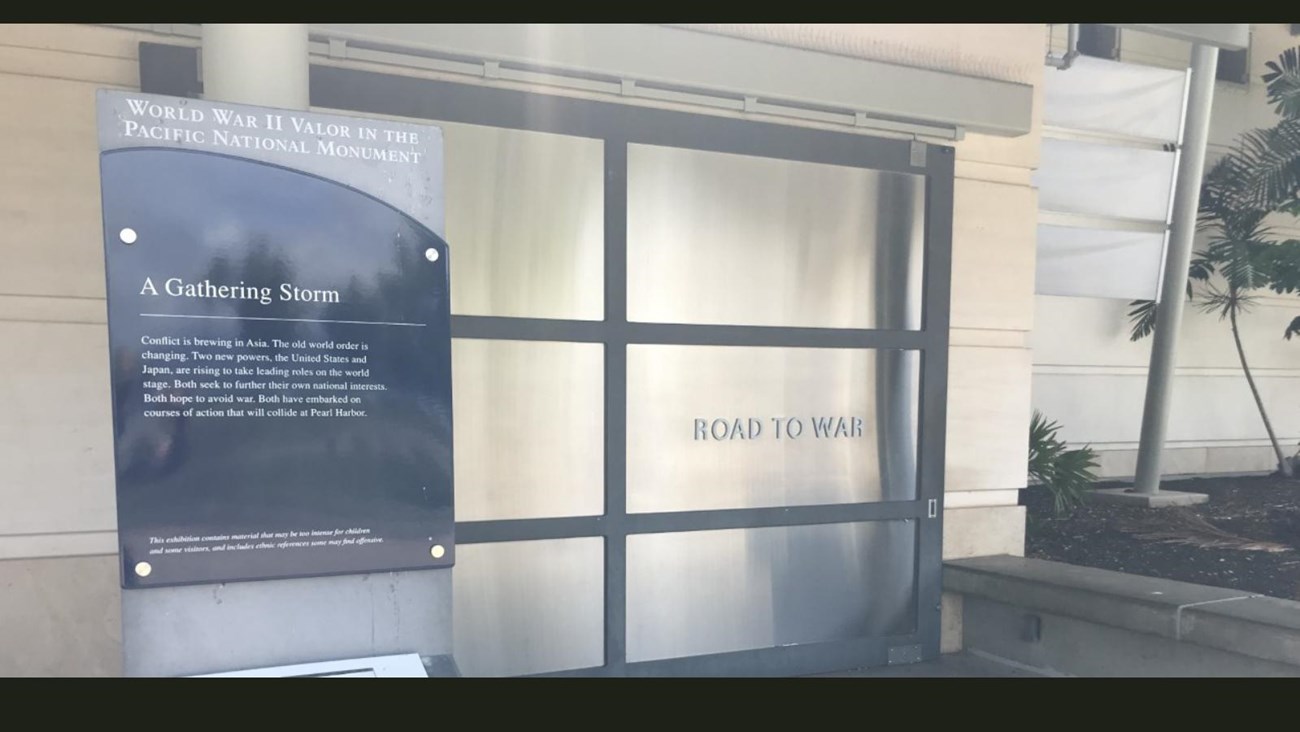Last updated: April 14, 2021
Thing to Do
Visit the Museums

Pearl Harbor National Memorial is home to two world class museums that offer a comprehensive look at the international causesthat led to the attack on Pearl Harbor and its after effects.
The Road to War Gallery covers over 100 years of history, but focuses on life and politics of the United States and Japan in the 1930s and 40s. This Gathering Storm as it is often referred too, discloses conflict brewing in Asia. The old world order is changing. Two new powers, the United States and Japan, are rising to take leading roles on the world stage. Both seek to further their own national interests. Both hope to avoid war. Both have embarked on courses of action that will collide at Pearl Harbor.
The Attack Gallery begins on the morning of December 7th, residents on the island of Oahu were alerted to the roar of aircraft as Japanese planes sweep across the island. They head towards military bases and airfields, where sailors and soldiers prepare for morning colors. Takes visitors through the battles in the Pacific and concludes with the surrender aboard the USS Missouri.
Seperating the two galleries is Oahu Court, highlighting what Hawai'i looked like in the 1930s and 1940s, before the era of package tours and charter flights, visitors to the U.S. territory of Hawai'i usually traveled by steamship, docking in Honolulu. They found a richly diverse population, a bustling city, inviting beaches — and sidewalks crowded with men in uniform.
The Road to War Gallery covers over 100 years of history, but focuses on life and politics of the United States and Japan in the 1930s and 40s. This Gathering Storm as it is often referred too, discloses conflict brewing in Asia. The old world order is changing. Two new powers, the United States and Japan, are rising to take leading roles on the world stage. Both seek to further their own national interests. Both hope to avoid war. Both have embarked on courses of action that will collide at Pearl Harbor.
The Attack Gallery begins on the morning of December 7th, residents on the island of Oahu were alerted to the roar of aircraft as Japanese planes sweep across the island. They head towards military bases and airfields, where sailors and soldiers prepare for morning colors. Takes visitors through the battles in the Pacific and concludes with the surrender aboard the USS Missouri.
Seperating the two galleries is Oahu Court, highlighting what Hawai'i looked like in the 1930s and 1940s, before the era of package tours and charter flights, visitors to the U.S. territory of Hawai'i usually traveled by steamship, docking in Honolulu. They found a richly diverse population, a bustling city, inviting beaches — and sidewalks crowded with men in uniform.
Details
Duration
5-300 Minutes
Activity
Museum Exhibits
Take 5 minutes or 5 hours. There are many educational and insightful exhibits found throughout.
Pets Allowed
No
Activity Fee
No
Pearl Harbor National Memorial, the Pearl Harbor Visitor Center, museums, and grounds are free.
Reservations
No
Accessibility Information
The park is ADA compliant and handicap accessible. Wheelchairs and scooters can be brought on site and throughout all parts of the visitor center, to include the theaters and the memorial. Please note: The visitor center does not offer wheelchairs, except in emergency situations.
Walking between facilities can be challenging for visitors with mobility issues, but there are several benches throughout the visitor center for rest opportunities.
There are no doctors or nurses on-site. EMS is available and a hospital is nearby. If you have a medical need please call 911.
Walking between facilities can be challenging for visitors with mobility issues, but there are several benches throughout the visitor center for rest opportunities.
There are no doctors or nurses on-site. EMS is available and a hospital is nearby. If you have a medical need please call 911.
